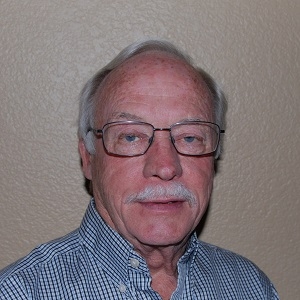Zintoro’s Foundation
Guest writer Steve Clegg details “Zintoro’s Foundation” and how AI can be a valuable tool for business analysis. This kicks off a focus on AI for his next blog posts.
An equipment dealer’s business is driven by Each Customer’s Transactions, Expectations & Experience.
The result of these interactions is responsible for the dealer’s customer retention and purchase frequency.
Their impressions of the experience are simply based on the frequency and recency of the exchange of goods and services between two people. These transactions are represented by 65% Parts, 24% Service and 9% Rental with Equipment new and used only 2%.
Their impressions of the experience are simply based on the frequency and recency of the exchange of goods and services between two people.
Revenues and profits are the result not the driver. 65% 24% 9% 2%
Parts Service Rental Equipment Parts Rental Service Expectations 2%
Equipment Customer/ Employee Experience Equipment Dealer Customer Expectations Are Based on their Prior Transaction Experiences As shown below with 98% of these transactions being Parts, Service and Rental
Revenues and profits are the result not the driver of your customer retention and engagement.
The world is on the cusp of an unprecedented economic transformation, driven by the rapid advancements in Artificial Intelligence (AI) technology. As we stand at the threshold of this new era, it is crucial to understand how AI will revolutionize the very foundation of our economy – the exchange of goods and services. The immense potential of AI is already reshaping economic transactions, improving efficiency, and optimizing resource management.
This will change the structure of organizations to supporting customer transactions versus transactions supporting layers of bureaucratic management. The pyramid will be turned upside down.
For centuries, the economy has relied on the simple exchange of goods and services between individuals and organizations. However, traditional methods of conducting these exchanges often suffer from inefficiencies, such as information asymmetry, suboptimal resource allocation, large none contributing bureaucracies, financial exposure, poor returns on capital and lack of personalization. AI promises to address these challenges by leveraging vast amounts of data, advanced algorithms, and machine learning techniques to optimize every aspect of the transaction process thereby minimizing the back- office burden and associated transaction costs and asset timing risks.
Imagine a world where AI-powered systems can analyze, accurately forecast consumer behavior and preferences in real-time, providing personalized product and service recommendations that cater to individual needs.
Supply chains and logistics networks would be streamlined, ensuring the right goods are delivered to the right place at the right time, with minimal waste and maximum efficiency.
Dynamic pricing strategies, based on real-time market conditions and demand forecasting, are already helping businesses optimize and accurately forecast their revenue and profits while providing fair and competitive prices to consumers.
These capabilities already exist, the top-down management and control has already started to be replaced with a bottom-up efficient support structure for the two people transaction exchange that retains customers and builds relationships driving customer transaction growth and retention. AI has the potential to revolutionize resource management and allocation.
By leveraging predictive models and optimization algorithms, businesses can minimize waste, reduce energy consumption, and promote sustainable practices. AI-driven workforce management systems can match the right skills to the right tasks, enhancing productivity, training, and job satisfaction.
Management oversight and decision-making processes can be augmented by AI-generated insights and recommendations, enabling leaders to make informed, data-driven choices. As we embark on this journey, it is essential to recognize that the AI revolution is not about replacing humans and human intelligence but rather about augmenting and enhancing it. The collaboration between humans and AI will be the key to unlocking the full potential of this technology in driving economic growth and creating a more efficient, sustainable, and prosperous future.
In the following blogs, we will provide a comprehensive understanding of how AI is transforming the economy through optimized exchanges and resource efficiency. We will equip readers with the knowledge and tools necessary to navigate this new landscape and harness the power of AI in their own economic endeavors. Get ready to embark on an exciting exploration of the AI revolution and its profound impact on the way we exchange goods and services. Together, we will uncover the boundless possibilities that AI holds for transforming the economy and shaping a better future for all. The AI revolution has already started.









